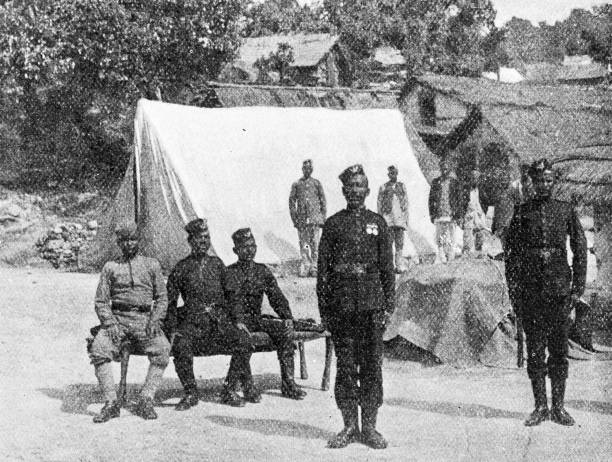The road from military service to executive leadership is a path built on discipline, precision, and purpose. Those same qualities that keep soldiers steady under pressure now guide how one leader runs a fast-moving, high-stakes operation. Max Gorin took the lessons he learned in the Army and applied them to the world of emergency medical services. His approach is grounded in structure and accountability, yet flexible enough to meet the unpredictable nature of the job. It’s this balance that defines how he leads his EMS empire today.
Why Structure Matters When Lives Are on the Line
In the military, structure is less about control and more about being ready for anything. The same idea applies in emergency medical services, where clear roles and reliable systems keep teams focused when every second matters. This kind of order creates the foundation for swift, dependable patient care.
Accountability as a Way of Life
In high-stakes work like emergency medical services, accountability is what keeps the wheels turning. It’s not just a rule someone wrote down or a policy in a handbook. It’s a shared mindset that shapes how people show up for each other every single day.
Leading by Example
True accountability starts at the top. When leaders take ownership of their actions and decisions, it sets the tone for the entire team. This attitude encourages everyone to bring their best effort, knowing that responsibility is something shared, not imposed.
Building Trust Through Responsibility
Teams that hold themselves accountable build trust without even trying. When everyone knows they can count on others to follow through, you get a culture built on respect and reliability. Out in the field, that trust becomes everything. It lets teams act fast and with confidence when lives depend on it.
Turning Mistakes into Growth
Accountability also means owning your mistakes and actually learning from them. Instead of pointing fingers, teams use those moments to think about what happened and how to do better. This doesn’t just make people more skilled. It builds the kind of resilience and confidence you need for whatever’s coming next.
Staying Flexible in the Face of Chaos
In emergency medical services, no two days are ever the same. Flexibility is what allows teams to stay calm, think clearly, and make the right calls when situations change in an instant.
Adapting to the Unexpected
Whether it’s unexpected traffic or a patient’s condition taking an unexpected turn, every emergency presents a new challenge. Being adaptable means you can make last-minute changes to your plan without losing focus. It’s about remaining composed and coming up with solutions even if your initial plan fails.
Keeping a Level Head Under Pressure
When things get tense, flexibility helps you stay in control. It gives you room to pause, size up the situation, and pick your next move instead of just reacting out of panic. That mindset turns chaos into steps you can actually handle, keeping both patients and responders safe.
Learning to Adjust and Improve
Flexibility is also about looking back and learning. Every curveball teaches you something that helps you handle the next one better. By learning from what actually happens out there, teams get more adaptable, more confident, and more ready for whatever’s next.
Building Teams That Think and Act as One
Teamwork is the heartbeat of emergency medical services. When every second matters, success depends on how well people communicate, coordinate, and trust one another. It takes more than skill to build that kind of unity; it takes shared purpose and respect.
Creating a Culture of Communication
Clear communication keeps everyone on the same page, especially when the pressure’s on. When team members speak up, really listen, and share information fast, decisions happen quicker and more accurately. Open communication also builds confidence, so everyone can do their job without second-guessing themselves.
Trusting Each Other’s Strengths
Everyone contributes something unique, as strong teams are aware. Perhaps it’s a dispatcher who maintains composure and organizes everything, or a paramedic who thinks quickly. Every role supports the others. Teams can function as a cohesive unit because of this mutual trust, which ensures that everyone is doing their share.
Training Together to Build Confidence
Teamwork doesn’t just happen. You build it through training together and shared experiences. When you practice as a team, you start to know what your teammates are going to do before they do it. Over time, that rhythm creates a deep connection that turns split-second decisions into smooth teamwork.
Calm Under Pressure Is Not Just a Skill, It’s a Mindset
In emergency medical services, pressure comes with the territory. The difference between panic and precision often lies in the ability to stay calm, think clearly, and act with purpose. Maintaining composure is not just about experience. It’s about mindset.
Staying Focused When Stakes Are High
In moments when everything feels urgent, focus becomes the most valuable tool. Staying calm helps professionals make thoughtful decisions instead of reacting impulsively. It allows them to assess the situation clearly and choose the safest, most effective course of action.
Leading with Steady Confidence
A composed leader sets the tone for the group. People are better able to maintain their composure in the face of chaos when they observe their leader acting with assurance and poise. This feeling of comfort spreads swiftly, maintaining the group’s cohesiveness and effectiveness under pressure.
Turning Pressure into Purpose
The best responders don’t let pressure break them; they use it to stay sharp and motivated. Viewing challenges as opportunities to perform at their best transforms stress into drive. Over time, this mindset builds resilience and reinforces the calm needed to handle any situation.
Leading with Purpose Beyond Profit
At its core, leadership in emergency medical services is about people, purpose, and poise. Max Gorin shows that the same discipline and teamwork that guide soldiers can also build strong, compassionate organizations. His approach proves that when structure meets heart, even the most demanding work can create lasting impact.



